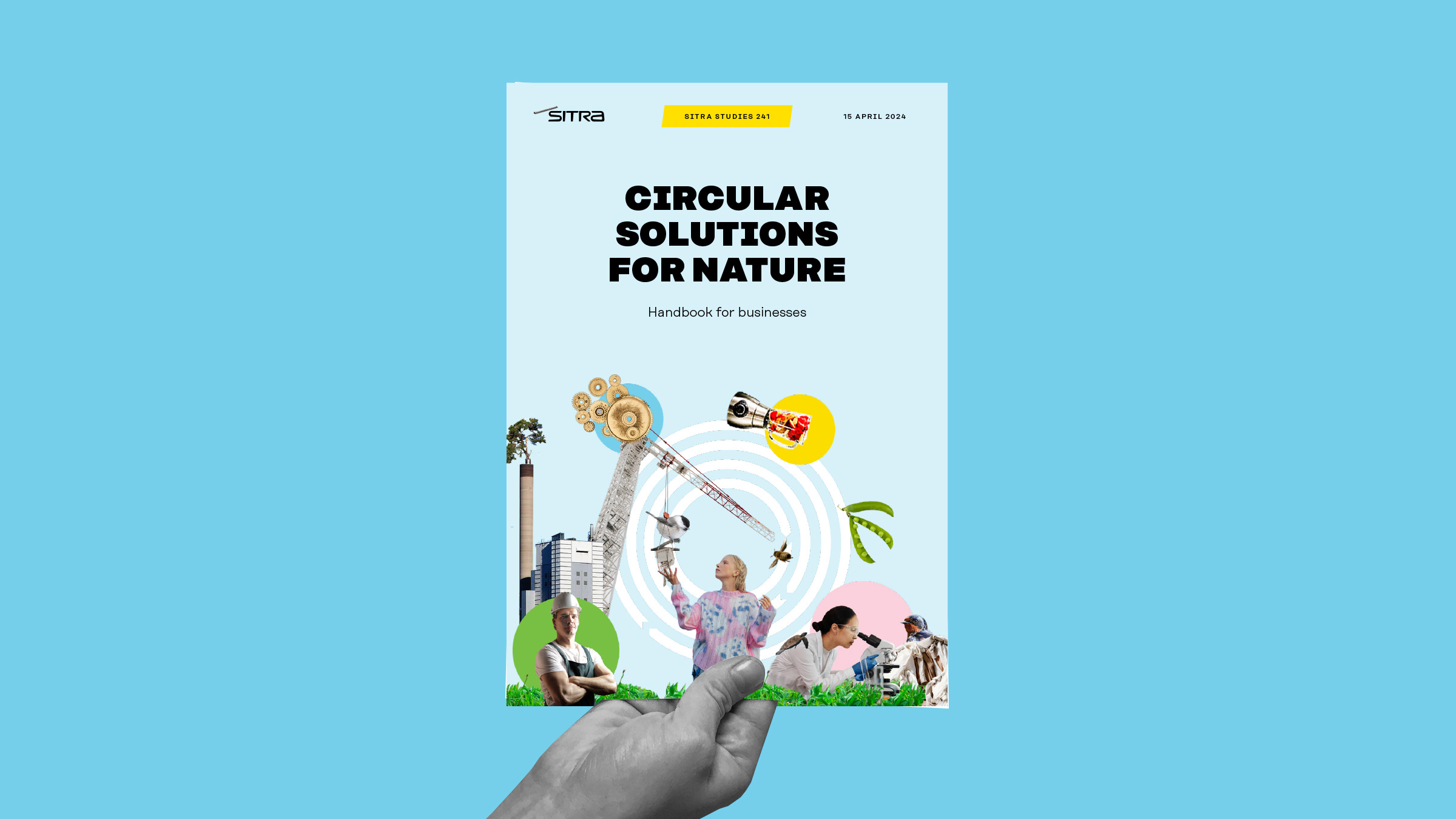This practical handbook presents a comprehensive guide for businesses aiming to integrate circular business models into their operations to effectively address biodiversity loss.
It provides a primer of the interconnection between circularity and nature, and thereafter provides a three-step approach for action, based on:
- identifying critical biodiversity impacts in the value chain;
- using circular solutions to tackle these impacts;
- designing the circular transformation journey.
Nature plays a vital role in supporting society, yet it has undergone a dramatic decline as a result of human activities. This poses significant risks to businesses, undermining their operations and supply chains at large.
In this handbook, we guide companies to identify and prioritise their most critical biodiversity impacts. To address critical biodiversity impacts, it is vital to tackle the pressures behind these impacts. This requires a shift from the current linear production and consumption models to systems that give us more value from what we have to help us reduce resource use and pressures on nature.
Circular solutions are essential tools for achieving this transformation. Six circular business models are presented to guide companies in formulating which circular solutions can address their critical biodiversity impacts.
Although the handbook can be applied to companies in any sector, it focuses on four land-intensive sectors: buildings and construction; fibres and textiles; food and agriculture; and forests. It delves into the circular solutions that are most relevant for tackling biodiversity loss, tailored specifically for these sectors, providing businesses with actionable strategies for implementation along their respective value chains.
The hanbook concludes with designing the transformation journey, by harnessing companies’ unique strengths, kick-starting business model transformation and leveraging collaborative efforts for effective outcomes.
By following the outlined steps, businesses can play a pivotal role in unlocking new value-creation opportunities and safeguarding biodiversity.
This handbook will help you to:
- understand the interconnectedness between the circular economy and biodiversity, and the role of circular solutions in tackling biodiversity loss;
- discover how circular solutions serve as a vehicle for value creation, competitiveness, innovation and resource optimisation;
- identify the most critical biodiversity impacts and prioritise actions in these places;
- to select the most effective circular solutions to reduce the identified critical biodiversity impacts;
- to kick-start your business model transformation to becoming nature positive.
Who should use this handbook?
- This handbook primarily targets employees within organisations tasked with corporate sustainability, supply chain management and innovation leadership, as well as C-suites seeking to advance solutions that give them more value from existing resources and reduce pressures on nature.
- Large corporations with established initiatives focused on nature action, including companies that are:
- interested in exploring or already working with nature targets (for example science-based targets for nature (SBTN) or are SBTN-aligned)
- ready to progress towards the implementation phase to deliver on nature targets.
- Companies especially operating in sectors with significant impact on biodiversity such as: food and agriculture, buildings and construction, fibres and textiles, and the forest sector, with an eye to developing disruptive business models for a growing market.
- Any company who wants to explore how circular solutions can help them to create more value from existing resources and act on nature.




















Recommended
Have some more.